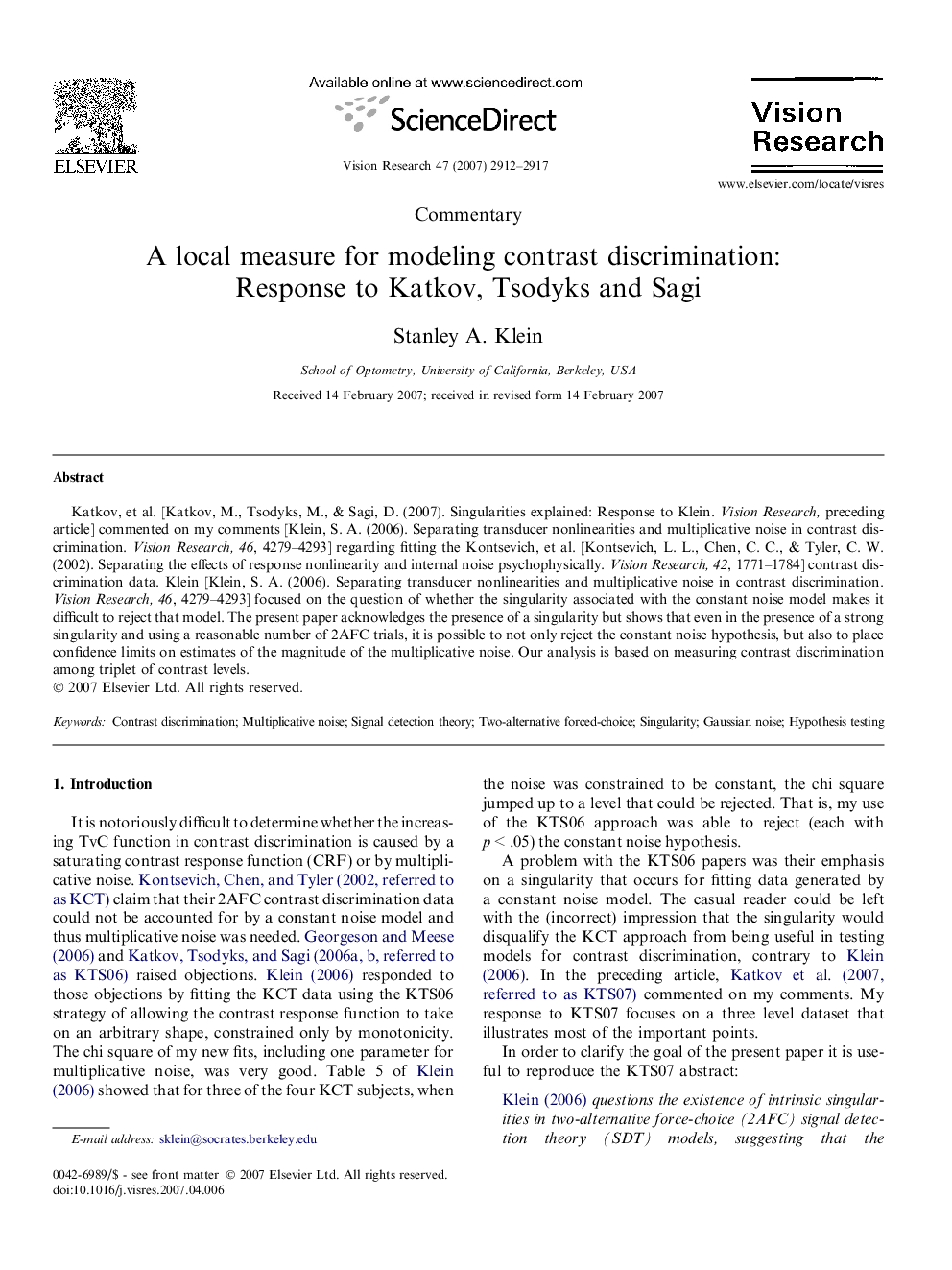| Article ID | Journal | Published Year | Pages | File Type |
|---|---|---|---|---|
| 4035485 | Vision Research | 2007 | 6 Pages |
Katkov, et al. [Katkov, M., Tsodyks, M., & Sagi, D. (2007). Singularities explained: Response to Klein. Vision Research, preceding article] commented on my comments [Klein, S. A. (2006). Separating transducer nonlinearities and multiplicative noise in contrast discrimination. Vision Research, 46, 4279–4293] regarding fitting the Kontsevich, et al. [Kontsevich, L. L., Chen, C. C., & Tyler, C. W. (2002). Separating the effects of response nonlinearity and internal noise psychophysically. Vision Research, 42, 1771–1784] contrast discrimination data. Klein [Klein, S. A. (2006). Separating transducer nonlinearities and multiplicative noise in contrast discrimination. Vision Research, 46, 4279–4293] focused on the question of whether the singularity associated with the constant noise model makes it difficult to reject that model. The present paper acknowledges the presence of a singularity but shows that even in the presence of a strong singularity and using a reasonable number of 2AFC trials, it is possible to not only reject the constant noise hypothesis, but also to place confidence limits on estimates of the magnitude of the multiplicative noise. Our analysis is based on measuring contrast discrimination among triplet of contrast levels.
